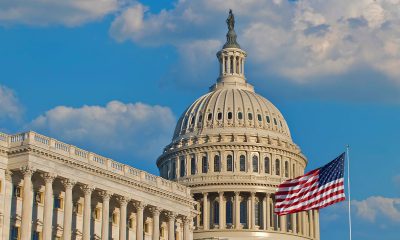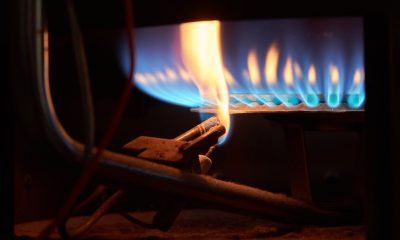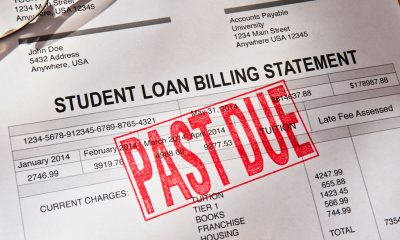Bay Area
Board Bars Evictions Related to COVID-19
Several times during the COVID-19 public health emergency, the Board has passed resolutions barring evictions for nonpayment of rent arising directly from the coronavirus. Preventing evictions for nonpayment due to financial hardship related to COVID-19 allows the County and its partners to continue making funds available for tenants who have struggled to pay rent. Since spring 2020, nearly 1,260 local households have received County-sponsored COVID-19 rental assistance.

Protections intended for those experiencing hardship because of pandemic
Courtesy of Marin County
Determined to prevent housing displacement for residents financially hampered by the ongoing pandemic, the Marin County Board of Supervisors took another action June 21 to prohibit residential renter evictions in unincorporated Marin effective July 1 through Sept. 30, 2022. The State of California’s eviction protections are scheduled to expire June 30.
Several times during the COVID-19 public health emergency, the Board has passed resolutions barring evictions for nonpayment of rent arising directly from the coronavirus. Preventing evictions for nonpayment due to financial hardship related to COVID-19 allows the County and its partners to continue making funds available for tenants who have struggled to pay rent. Since spring 2020, nearly 1,260 local households have received County-sponsored COVID-19 rental assistance.
The County is continuing to assist tenants who have applied for rental assistance and working with community partners to assure an equitable distribution of federal funds earmarked for eviction prevention. All renters have been protected by state or local laws, regardless of a person’s citizenship status, during the public health emergency. The County continues to process rental assistance applications as quickly as possible with added staff over the past year to accommodate assistance applications.
Rental assistance priority has been given to households that are considered extremely low income, which in Marin would be a family of three with an income of no more than $43,550. Nationally, communities of color have been disproportionately impacted by the pandemic and are often at the highest risk of housing displacement. The County recognizes that those most in need of eviction protection experience barriers to access such a program. While more than two-thirds of non-Hispanic white residents are homeowners in Marin, roughly three-quarters of both Black/African American and Hispanic/Latinx communities in Marin are renters.
Between state and federal funds, the County’s pandemic rental assistance program was awarded $36,414,871 of which $23,970,885 has been distributed to 1,260 local households in need. There is a remaining balance of $8,579,705, which will serve the remaining applicants and waiting list and is anticipated to be spent by September 30, 2022.
Clearing accumulated debt is designed to provide a lifeline to the hardest-hit families and provide income stability for landlords. Several local agencies, such as Canal Alliance, Community Action Marin, and North Marin Community Services, are assisting applicants with the process.
Property owners may call the District Attorney’s Consumer Protection Unit at (415) 473-6450 for assistance on rights and responsibilities. Renters are encouraged to contact Legal Aid of Marin at (415) 492-0230, extension 102, for inquiries on eviction protections.
Anyone needing help with the online application may call (415) 473-2223 or email staff to learn more about the Emergency Rental Assistance Program. More information about the County’s eviction moratorium is on the County’s COVID-19 Renter Protections webpage.
Alameda County
Seth Curry Makes Impressive Debut with the Golden State Warriors
Seth looked comfortable in his new uniform, seamlessly fitting into the Warriors’ offensive and defensive system. He finished the night with an impressive 14 points, becoming one of the team’s top scorers for the game. Seth’s points came in a variety of ways – floaters, spot-up three-pointers, mid-range jumpers, and a handful of aggressive drives that kept the Oklahoma City Thunder defense on its heels.

By Y’Anad Burrell
Tuesday night was anything but ordinary for fans in San Francisco as Seth Curry made his highly anticipated debut as a new member of the Golden State Warriors. Seth didn’t disappoint, delivering a performance that not only showcased his scoring ability but also demonstrated his added value to the team.
At 35, the 12-year NBA veteran on Monday signed a contract to play with the Warriors for the rest of the season.
Seth looked comfortable in his new uniform, seamlessly fitting into the Warriors’ offensive and defensive system. He finished the night with an impressive 14 points, becoming one of the team’s top scorers for the game. Seth’s points came in a variety of ways – floaters, spot-up three-pointers, mid-range jumpers, and a handful of aggressive drives that kept the Oklahoma City Thunder defense on its heels.
One of the most memorable moments of the evening came before Seth even scored his first points. As he checked into the game, the Chase Center erupted into applause, with fans rising to their feet to give the newest Warrior a standing ovation.
The crowd’s reaction was a testament not only to Seth’s reputation as a sharpshooter but also to the excitement he brings to the Warriors. It was clear that fans quickly embraced Seth as one of their own, eager to see what he could bring to the team’s championship aspirations.
Warriors’ superstar Steph Curry – Seth’s brother – did not play due to an injury. One could only imagine what it would be like if the Curry brothers were on the court together. Magic in the making.
Seth’s debut proved to be a turning point for the Warriors. Not only did he contribute on the scoreboard, but he also brought a sense of confidence and composure to the floor.
While their loss last night, OKC 124 – GSW 112, Seth’s impact was a game-changer and there’s more yet to come. Beyond statistics, it was clear that Seth’s presence elevated the team’s performance, giving the Warriors a new force as they look to make a deep playoff run.
Activism
Oakland Post: Week of November 26 – December 2, 2025
The printed Weekly Edition of the Oakland Post: Week of November 26 – December 2, 2025

To enlarge your view of this issue, use the slider, magnifying glass icon or full page icon in the lower right corner of the browser window.
Activism
Oakland Post: Week of November 19 – 25, 2025
The printed Weekly Edition of the Oakland Post: Week of November 19 – 25, 2025

To enlarge your view of this issue, use the slider, magnifying glass icon or full page icon in the lower right corner of the browser window.
-

 Activism3 weeks ago
Activism3 weeks agoOakland Post: Week of November 12 – 18, 2025
-

 Activism4 weeks ago
Activism4 weeks agoOakland Post: Week of November 5 – 11, 2025
-

 Activism2 weeks ago
Activism2 weeks agoIN MEMORIAM: William ‘Bill’ Patterson, 94
-

 Activism3 weeks ago
Activism3 weeks agoHow Charles R. Drew University Navigated More Than $20 Million in Fed Cuts – Still Prioritizing Students and Community Health
-

 #NNPA BlackPress3 weeks ago
#NNPA BlackPress3 weeks agoThe Perfumed Hand of Hypocrisy: Trump Hosted Former Terror Suspect While America Condemns a Muslim Mayor
-

 Bay Area3 weeks ago
Bay Area3 weeks agoNo Justice in the Justice System
-

 #NNPA BlackPress3 weeks ago
#NNPA BlackPress3 weeks agoProtecting Pedophiles: The GOP’s Warped Crusade Against Its Own Lies
-

 #NNPA BlackPress2 weeks ago
#NNPA BlackPress2 weeks agoTrump’s Death Threat Rhetoric Sends Nation into Crisis

























































